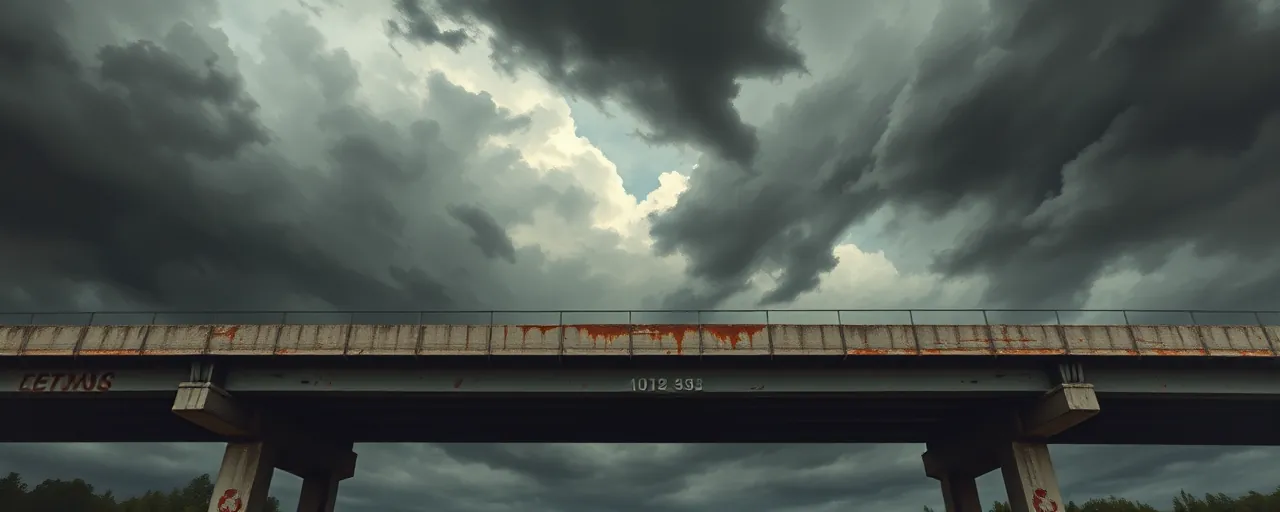A Road Paved With Taxpayer Gold
Governor Kathy Hochul rolled out the red carpet in Albany this week, unveiling an $86.7 million plan to polish up a five-mile stretch of the New England Thruway, I-95, in Westchester County. With 120,000 vehicles roaring through daily, the promise of smoother pavement and sturdier bridges sounds like a win. But peel back the press release, and the shine fades fast. This isn’t just a road fix; it’s a glaring spotlight on who’s really paying the tab: New York taxpayers, not the drivers who wear down the asphalt.
The Thruway Authority brags it’s free of federal or state tax dollars, funded instead by tolls from those who use it, including a third from out-of-state drivers. Fair enough, until you realize this $86.7 million isn’t coming from toll hikes or user fees. It’s a chunk of the Authority’s 2025 budget, ballooned to $477.3 million for capital projects, up $33 million from last year. That cash doesn’t fall from the sky; it’s siphoned from New Yorkers already crushed by one of the nation’s highest tax burdens. Hochul’s cheering a ‘dependable’ highway, but the real story is the dependable raid on our wallets.
Nighttime Fixes Can’t Hide Daytime Pain
To her credit, Hochul’s team scheduled most of the paving for overnight hours, dodging the daytime gridlock that clogs I-95. Lane closures and traffic shifts will still sting, but the move nods to common sense; fewer cars mean less chaos. Studies back this up, showing nighttime work cuts congestion and saves drivers thousands daily in lost time. Air quality even gets a breather with less idling. Yet, don’t be fooled into thinking this is some selfless gift to commuters and businesses. The disruption just shifts, not vanishes.
Local shops and families along this corridor, from Pelham Manor to Mamaroneck, aren’t popping champagne. Construction noise piercing the night and detours snarling morning deliveries don’t scream ‘economic boost.’ History tells the tale: projects like the Cross Bronx Expressway promised connectivity but left neighborhoods choked by pollution and fractured by asphalt. Today’s I-95 plan might not carve up communities, but it’s naive to think five miles of jackhammers won’t rattle Westchester’s economic backbone. Assemblymember Amy Paulin calls it a ‘tremendous win,’ but for whom? Not the small business owner watching customers vanish.
Bridges to Nowhere Near Prosperity
The project’s crown jewel is the rehab of 12 bridges, six getting a full overhaul and six a fresh coat of pavement. The Centre Avenue bridge in New Rochelle and the Chatsworth Avenue span in Larchmont headline the list, alongside a Metro-North bridge serving Larchmont station. Safety’s the pitch, and it’s hard to argue against sturdy overpasses when 120,000 vehicles thunder underneath daily. Add in new guiderails, lights, and striping, and the Thruway Authority paints a picture of a safer, shinier I-95 by 2026. But safety doesn’t pay the bills for those footing this overhaul.
Contrast this with the MTA’s 2025-29 Capital Plan, pumping $68.4 billion into transit and claiming 72,700 jobs yearly. That’s real economic muscle, tied to vendor spending and worker paychecks. I-95’s $86.7 million? It’s a drop in the bucket, handed to DeFoe Corp. of Mount Vernon with no clear lifeline for local jobs or growth. State Senator Shelley Mayer crows about ‘road safety and comfort,’ but where’s the comfort for taxpayers watching their dollars prop up bridges while businesses brace for lean months? This isn’t investment; it’s a shiny distraction from smarter priorities.
The Real Fix Lies in Accountability
Hochul’s defenders, like State Senate Majority Leader Andrea Stewart-Cousins, tie this to ‘historic momentum’ from programs like CHIPS, a federal cash grab for infrastructure. They’ll say it’s about supporting the local economy and easing travel. Reality check: the Thruway’s fatality rate already beats the national average, and New York City’s Vision Zero slashed traffic deaths 37% in early 2025 with targeted fixes like redesigned intersections. I-95 doesn’t need a gold-plated facelift; it needs efficient, focused upgrades that don’t bleed taxpayers dry or leave communities in the dust.
Here’s the rub that stings: New York’s $252 billion 2025 budget could’ve aimed higher. With $90 million for statewide infrastructure and $250 million for housing, Hochul had room to prioritize projects that lift all boats, not just pave over cracks. Instead, we get a flashy I-95 redo while the NYSDOT begs for $800 million more to keep core roads from crumbling. This isn’t leadership; it’s a photo-op masquerading as progress. Taxpayers deserve better than a governor who’d rather ribbon-cut than reckon with the real costs.
